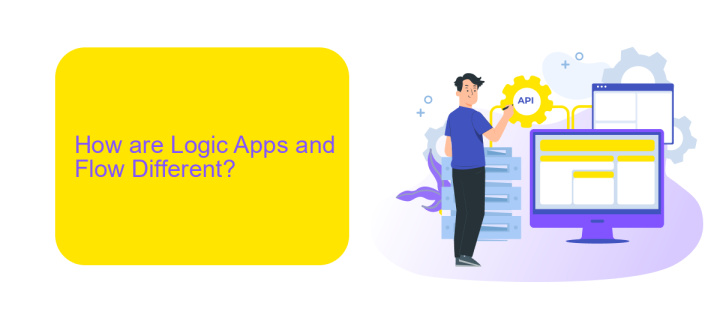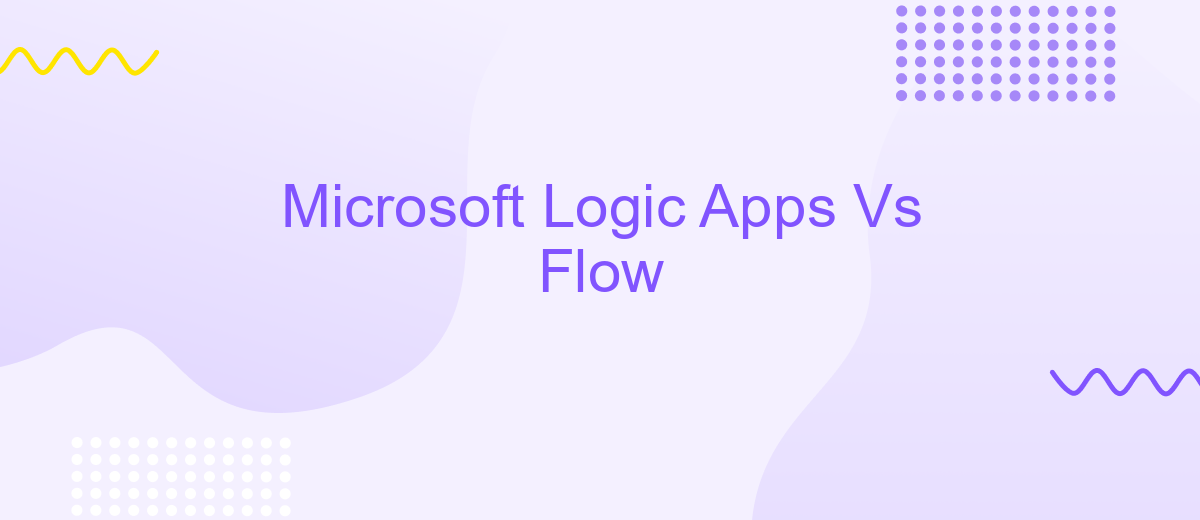Microsoft Logic Apps Vs Flow
When it comes to automating workflows and integrating applications, Microsoft offers two powerful tools: Logic Apps and Power Automate (formerly known as Flow). Both platforms provide robust solutions for streamlining business processes, but they cater to different needs and user experiences. In this article, we will compare Microsoft Logic Apps and Power Automate to help you determine which is the best fit for your organization.
What are Microsoft Logic Apps and Flow?
Microsoft Logic Apps and Flow are both powerful tools designed to automate workflows and integrate applications, but they cater to different needs and user bases. Logic Apps is a cloud-based service that allows developers to build complex integrations and workflows with minimal code. It is ideal for enterprise-level solutions and supports a wide range of connectors for various services.
- Logic Apps: Cloud-based, enterprise-focused, minimal coding required
- Flow: User-friendly, designed for business users, easy to set up
Flow, now known as Power Automate, is tailored for business users who need to automate repetitive tasks and processes without needing deep technical knowledge. It offers a simple, intuitive interface and is part of the Microsoft Power Platform. For those looking to integrate various services and automate workflows without extensive coding, tools like ApiX-Drive can also be considered. ApiX-Drive provides a user-friendly platform to connect different applications and automate data transfers seamlessly.
How are Logic Apps and Flow Different?

Microsoft Logic Apps and Flow, now known as Power Automate, serve similar purposes but cater to different user needs. Logic Apps is a cloud-based service designed for developers and IT professionals to create and manage complex workflows and integrations. It allows for deep customization and supports a wide range of connectors and enterprise-level scenarios. On the other hand, Power Automate is more user-friendly and geared towards business users who need to automate routine tasks without extensive coding knowledge. It offers a more intuitive interface and is integrated with Microsoft 365 applications, making it accessible for everyday business processes.
Another key difference lies in their pricing models and deployment options. Logic Apps operates on a consumption-based pricing model, where users pay for the number of actions executed, making it cost-effective for large-scale operations. Power Automate, however, follows a per-user or per-flow pricing model, which can be more predictable for businesses with consistent automation needs. Additionally, Logic Apps runs exclusively in the Azure environment, while Power Automate can be used both in the cloud and on-premises with the Data Gateway, offering more flexibility in deployment. For those looking to simplify their integrations further, services like ApiX-Drive can provide additional support in configuring and managing these workflows seamlessly.
When to Use Logic Apps

Microsoft Logic Apps is a powerful tool designed for creating and managing workflows that integrate various services and applications. It is particularly useful for complex enterprise-level integrations where reliability, scalability, and advanced capabilities are crucial. When deciding whether to use Logic Apps, consider the following scenarios:
- Need for advanced workflow automation that involves multiple steps and conditions.
- Requirement to integrate with a wide range of services, including both Microsoft and third-party applications.
- Scenarios where high reliability and scalability are essential, such as in large-scale enterprise environments.
- Situations requiring extensive monitoring and logging capabilities to track workflow execution and performance.
- When you need to create complex business processes that require advanced logic and custom connectors.
For simpler integrations or when you need a more user-friendly interface, you might consider using Microsoft Power Automate (formerly known as Flow). Additionally, tools like ApiX-Drive can be beneficial for setting up integrations quickly and easily, especially for small to medium-sized businesses that do not require the extensive capabilities of Logic Apps.
When to Use Flow

Microsoft Flow, now known as Power Automate, is an excellent tool for automating repetitive tasks and streamlining workflows. It is particularly useful for users who need to connect various applications and services without writing a single line of code. This makes it an ideal choice for business users who need to automate processes quickly and efficiently.
One of the primary advantages of using Flow is its user-friendly interface, which allows users to create automated workflows with a simple drag-and-drop functionality. This ease of use makes it accessible to a wide range of users, from beginners to advanced professionals.
- Automating routine tasks like data entry, email notifications, and file synchronization.
- Integrating various apps and services such as Microsoft Office 365, SharePoint, and third-party applications.
- Creating approval workflows for business processes.
- Monitoring and managing workflows from a centralized dashboard.
In addition to these features, Flow can be seamlessly integrated with services like ApiX-Drive, which further enhances its capabilities by enabling even more complex integrations and automations. Whether you are a small business or a large enterprise, Flow offers the flexibility and scalability to meet your automation needs.
Conclusion
In conclusion, both Microsoft Logic Apps and Flow offer robust solutions for automating workflows and integrating various services. While Logic Apps provides a more comprehensive and scalable platform suitable for complex enterprise-level processes, Flow (now Power Automate) is designed for ease of use and rapid deployment, making it ideal for smaller teams and individual users. The choice between the two largely depends on the specific needs and technical expertise of your organization.
For those looking to further simplify their integration processes, services like ApiX-Drive can be invaluable. ApiX-Drive offers an intuitive interface and seamless connectivity with numerous applications, enabling users to automate tasks without extensive coding knowledge. By leveraging such tools, businesses can enhance their operational efficiency and focus more on strategic initiatives rather than technical complexities.


FAQ
What are the primary differences between Microsoft Logic Apps and Microsoft Flow?
Can I use both Microsoft Logic Apps and Power Automate together?
Which service is more cost-effective for small businesses?
How do I decide which service to use for my project?
Are there third-party tools that can help with automation and integration besides Microsoft Logic Apps and Power Automate?
Apix-Drive is a simple and efficient system connector that will help you automate routine tasks and optimize business processes. You can save time and money, direct these resources to more important purposes. Test ApiX-Drive and make sure that this tool will relieve your employees and after 5 minutes of settings your business will start working faster.

